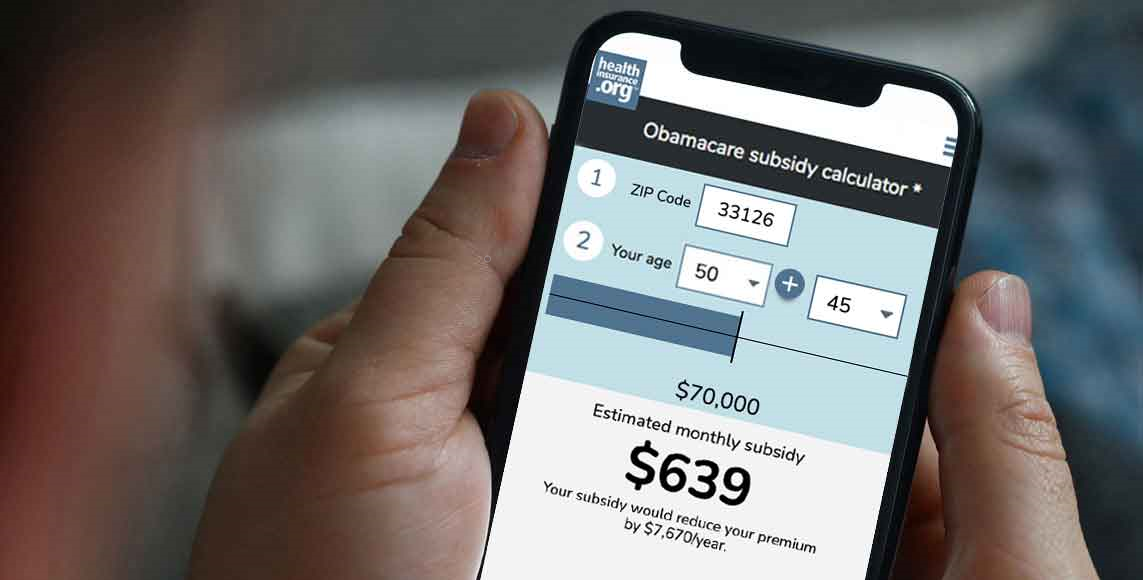
EDITOR’S NOTE: As part of healthinsurance.org’s continuing coverage of the 2014-2015 Obamacare open enrollment period, we recently published a 38-page eBook, The Insider’s Guide to Obamacare’s Open Enrollment. Authored by contributor Louise Norris, the book is filled with advice written to help consumers more easily – and more quickly – navigate this open enrollment period.
This week, we extend a video series that goes into more depth about open enrollment topics. In this segment, Louise Norris and fellow healthinsurance.org contributor Andrew Sprung explain the value of cost-sharing reduction (CSR) subsidies and why some consumers may be missing out on them. (For more, read Sprung’s post, The Affordable Care Act’s ‘stealth subsidy.’)
If you have an open enrollment question that you haven’t seen answered in the eBook or in the pages of this site – drop us a note with your suggestion.
Transcript:
Andrew: Hello my name is Andrew Sprung. I write about the Affordable Care Act and health insurance and health matters generally for healthinsurance.org and also for other publications including The Atlantic and The New Republic as well as on my blog xpostfactoid.
I’m here with Louise Norris, also a writer for healthinsurance.org. Louise brings a broker’s perspective to the discussion. She and her husband have run a health insurance brokerage in Colorado since 2003.
Louise has been writing about health insurance and healthcare issues since 2006. She is the author of over 120 articles on the subject and also an eBook available free on healthinsurance.org called the Insider’s Guide to Obamacare’s Open Enrollment.
So we are here today talk about to talk about a little-known benefit that many buyers of private health insurance in the affordable care act marketplaces will be eligible for. Many people know that the government will help with a large part of the monthly premium for many buyers on the exchanges – most buyers on the exchanges, in fact.
What’s less known is that lower-income buyers – for example, a single person earning up to a little more than $29,000 a year – or a family of four earning up to a little bit shy of $60,000 a year are also eligible for a second set of subsidies known as cost-sharing reductions. So I will turn it over to Louise to explain what those are and how they help plan buyers.
How cost-sharing reductions subsidies work
Louise: Thank you, Andrew. Good to be here. So cost-sharing reductions – as you mentioned – for people that are on the lower end of the income scale, definitely into what people consider the middle class, for sure – like you said, a family of four earning $60,000 a year is eligible for these subsidies – and basically, the way they work is if you select a Silver plan in the exchange – if you’re in that income range and you select a Silver plan, you get, it’s sort of a boosted up Silver plan. You get better benefits and there’s two ways they do that.
First of all, the average percentage of the costs that you have to pay right from the get go is lower and also the total out-of-pocket that you would have to pay in the event of a serious claim is also lower.
The impact is very significant for people on the lower end of the income spectrum. A single individual earning $17,000 a year can get a Silver plan with a maximum out-of-pocket of $2,250 for the year and also have the plan cover an average of 94 percent of their costs before that out-of-pocket is met.
So that’s a dramatic improvement over say for example if they were to pick a Bronze plan instead, their maximum out-of-pocket would be $6,600 – significantly more than the $2,250 – and of the applicant’s share of costs before that maximum out-of-pocket would be 40 percent instead of only 6 percent. Basically, for the price of a Silver plan, you’re getting a plan that’s comparable to a Platinum plan or a plan that you would get through a really good employer plan without having to pay extra beyond what just a Silver plan costs.
So for people who qualify for these plans based on their income, it’s just a way to get much better coverage with the government paying the health insurance company to increase your benefits.
Andrew: And to reduce your out-of-pocket costs.
Louise: Right.
Andrew: Just to flesh that out a little more … If you look at Silver plans on the exchange, if you were not eligible for these cost-sharing reductions, for an individual the deductible might be typically maybe anywhere from $1,500 to $3,000. If you have the stronger cost-sharing reduction at the lower end of the income scale that you were mentioning, the deductible might be $250 … in some cases, it might even be zero dollars.
Louise: Right.
Andrew: It might be $500. And the co-pays are similarly much lower for an ER visit for going to a primary care physician, for going to a specialist … they’ll all be on the lower scale and they’re likelier to kick in before the deductible as well.
Louise: Right. All of your expenses will – by selecting that plan, all of your expenses will be lower than they would be if you didn’t qualify for that plan and you were on a Silver plan, but they’ll be dramatically lower than … because people who qualify for these cost-sharing reduction plans, they can still choose to purchase a Bronze plan, which will have lower premiums each month.
Of course they’re also eligible to purchase a Gold or a Platinum plan, but the Silver plans – for people who are eligible for these cost-sharing reduction plans – the Silver plans really stand out as a value because – even though they cost a little bit more per month than a Bronze plan – if you actually have to use your plan – if you have a medical issue or you need to go in and get treatment, you’re going to pay a lot less both on a small scale and a large scale in terms of your maximum out of pocket if you were to have a serious issue. Everything’s going to be reduced with those Silver plans compared with the Bronze plans.
So you may pay 30, 40 50 dollars a month more to have a Silver plan as opposed to a Bronze plan but you also have to think about it in terms of what you’re going to end up paying if you need to use your plan and it’s gonna be significantly lower on these Silver plans, especially like I said if your income is on the lower end of that spectrum pretty much up to about $23,000 in income for a single person. It’s a very significant reduction in out-of-pocket costs and just sort of day-to-day expenses for medical care if you select a Silver plan as opposed to choosing a Bronze plan.
Andrew: Great. Now you did mention that a Silver plan for an individual would typically be maybe 30, 40, 50 dollars a month more. The spread is likely to be larger if you’re older. It’s likely to be larger if there’s more than one person in the household. Doing that could potentially save you thousands of dollars a year in actual medical costs if somebody goes to the hospital or somebody has to have a series of tests or whatever. But I think we need to acknowledge that tens of dollars a month can be a heavy lift – tens of dollars a month more can be a heavy lift – for somebody with an income say under $20,000. The Bronze plans can be tempting even though they cover much less.
Are consumers getting the message about CSRs?
So let’s turn to how good a job the health exchanges do in making that tradeoff clear to people. A good broker like yourself or a navigator or a volunteer certified application counselor helping people to sign up for insurance on the ACA exchanges will make the tradeoffs clear but what if you’re going at it on your own on the Colorado site for example. What kind of help would you get?
Louise: Sure. You know, I that think … in Colorado here we have a state-run exchange. they do a lot of things really well but I think this particular area is something that could be done better. We had 40 percent of the enrollees last year chose Bronze plans, which is double the rate nationwide – where only about 20 percent of people chose Bronze plans – and if you look at how the Colorado site handles this issue, I think it becomes clear why that might be.
Basically if you’re eligible for the cost-sharing reduction plans, there’s a little notice that pops up on the exchange site that just says, “You may be eligible for premium subsidies and cost-sharing reduction subsidies – cost-sharing reductions. And then it just continues on and shows you all of your plans and I mean, I think a lot of people don’t – when you say “cost-sharing reduction plans” – I don’t think a lot of people necessarily know what that means, so people might just skim over that and keep on going.
And then the default is to show the plans based on premium with your cheapest plans first first so of course you’re going to have several Bronze plans pull up before you even see a Silver plan and in some cases the Bronze plans are very inexpensive, I mean, depending on your income, you can get Bronze plans for a few dollars a month and the closest Silver plan might be like I say even for just one person 30 or 40 or 50 dollars more so you’d have to scroll down to see it.
And then, when you do select a plan and you go to put it in your shopping cart and check out, there’s no warning or anything like that. Even if your income is just barely into the cost-sharing-reduction eligibility range – say your income is $17,000 a year – and you’ve selected a Bronze plan when there’s these cost-sharing reduction Silver plans just a little bit further down the list it doesn’t notify you that “Hey maybe you’d want to go back and doublecheck this. Are you sure?” There’s nothing like that.
People do shop based on premium an awful lot and I think that explains why Colorado had such a large percentage of people selecting Bronze plans.
Andrew: Yeah. For sure. I’m sure it was a major part of it. To be fair to Colorado, it’s a relatively wealthy state and on the whole, wealthier states tended to have more Bronze buyers because Bronze can make sense for somebody with a little bit more financial resources. They don’t get much – if they’re not eligible for cost-sharing reduction and they don’t get much premium help and they’re reasonably healthy, then they may sort of roll the dice and try the Bronze plan.
But for sure, it’s one of the exchanges that doesn’t give you much help and when you say it starts with – it shows you the cheapest plans first. Looking at the Colorado shop-around, there’s really a sea of Bronze. You’d have to scroll way down before you’d ever see a plan – before you’d get to the Silver. There’s no particular demarcation, I don’t think, between the metal levels unless you just consciously choose to filter for that … so it’s easy to miss.
HealthCare.gov is not perfect, but if you are eligible for CSR and you do try to buy a Bronze plan, you get a pop-up warning that says that CSR is available with Silver plans and not with the plans that you’re buying. It doesn’t then jump you – default you to look at Silver plans. It doesn’t actually even make it particularly clear that CSR comes only with Silver. Silver is kind of thrown in there as an adjective and it’s easy, I think, to miss.
But there is something to think about – something to make you pause and think twice – and as you said, the 36 states that were on HealthCare.gov last year were fairly successful in steering people who were eligible for CSR to Silver.
We don’t know exactly what percentage of buyers were CSR eligible but we do know that only 15 percent of buyers who were eligible for any kind of subsidy chose Bronze. So that’s a pretty good sign whereas again overall in Colorado, 40 percent chose Bronze.
And in fact Colorado did break out numbers for people who were eligible for cost-sharing reduction and among those eligible for the strongest, only 80 percent chose Silver. Among those with incomes under 200 percent of the poverty level – which is still quite strong cost-sharing reduction territory – only 70 percent chose Silver so that’s really not good enough and not as good as the federal standard and some other state exchanges. So I guess our little message to Colorado is “Flag the CSR. Does that seem fair to say?”
How to promote CSR subsidies
Louise: Absolutely … and are there state-run exchanges that are doing a better job?
Andrew: I think so. One that stands out is Connecticut which was widely regarded as having THE most successful exchange last year. The former CEO of the Connecticut exchange was tapped to now head HealthCare.gov. That’s Kevin Counihan.
And the Connecticut exchange … if you’re eligible for CSR if you’re doing the shop-around before you even sign up … and you punch in your income and your family household size (it really just takes 30 seconds on any shop-around to do that) if you qualify for CSR, the first thing you see when you ask to see the plan results is a notice that tells you you qualify for CSR. And then when you scroll down, lo and behold, it’s defaulted you to the Silver plan selections so you see those first and you have to make a conscious effort to bounce out of that and see Bronze or other metal levels.
So you do see loud and clear, so to speak, these nice large quotes with the premium, the deductible, the out-of-pocket maximum that you’ll have to spend in a year and so it’s more difficult to miss. And in fact, Connecticut is the second wealthiest state in the country and it only had 16 percent of all buyers buying Bronze – so clearly, they were doing something right there.
Louise: Right and I think, you know, in terms of overall average income, Colorado probably should have been in that same general category. Like you said, the 30 percent of people with incomes under 200 percent of the poverty level – which you know for a single individual you’re talking $23,000 a year – 30 percent of those people still picked Bronze plans …
Andrew: Well, some of them may have picked Gold or Platinum …
Louise: Or Gold and Platinum … that’s true … but did not pick Silver plans and based on their income, my guess is that a lot of them DID pick Bronze plans and you can’t explain it away based on Colorado’s higher-than-average income. There’s definitely something to it with the fact that Connecticut is doing such a good job of steering people toward those Silver plans.
Up to consumers to seek out CSRs
I don’t think people necessarily even know that the cost-sharing reductions are out there and so if you have a good broker or you talk to a navigator, you call in and get personal assistance, then you’re going to find out about the cost-sharing reduction plans, but if you’re just scrolling through on your own, I think that’s a key area where the web sites need to make sure they’re sort of directing people towards what would be probably the best option.
That’s not necessarily to say that a Silver plan is ALWAYS the best choice for people who qualify for cost-sharing reduction subsidies. It’s a personal choice and everyone who … you always have the choice of a Bronze, Silver, Gold or Platinum plan and also I think for the people on the higher end of the cost-sharing reduction eligibility range – for a single person with an income between $23,000 and about $29,000 a year – you do still qualify for the cost-sharing reductions but it’s not as dramatic as it is in terms of the added benefit. It’s not as dramatic as it is for somebody making $17,000 or $18,000 a year.
I think a general rule of thumb would be – up to about $23,000 a year for a single person – really look twice or three times at those Silver plans before you choose to go elsewhere because for most people in that range, they are going to present the best value.
Andrew:: That is a good rule of thumb. The cost-sharing reduction – if you’re over 200 percent of the poverty level – is only a very modest bump above the cost of the Silver plan without the benefit. So people in that range might think about the tradeoff with Bronze.
Some Bronze plans in some areas do have some benefits that kick in before you hit the very high deductibles. They might have decent copays for physician visits or they might have low costs for generic drugs, regardless of whether you’ve gotten anywhere near their deductible. And of course all plans in the ACA exchanges have free preventive services like birth control and screenings for things like cholesterol, colonoscopy … so everybody should get some benefit out of any plan on the exchange. But for a lot of low-income people, there’d be very minimal benefit – unless something catastrophic happens – to having a Bronze plan.
Louise: Right. Exactly. And if something catastrophic does happen, you need to keep in mind with those … if you select a cost-sharing plan, your worst-case scenario is better on those plans than it would be on a Bronze plan. Your maximum out of pocket – not only are they paying more for just your regular day-to-day medical expenses, but your maxiumum out-of-pocket on those cost-sharing reduction plans is lower than it would be on a Bronze plan.
Takeaway point for people is just to don’t just scroll through and look at the lowest premium and take that plan. You really need to seek out help if you need it. There’s in-person help available in your communities on the phone … online … you can definitely find somebody who can help you and if you want to do it …. You never pay anything for that help. A navigator, a broker, online, over the phone … it’s all free … the assistance to enroll.
But if you do want to do it on your own, make sure you’re taking enough time to really crunch some numbers and look at the details of the plans. You don’t just want to pick a plan based on its price.
Andrew: Well. That seems a good takeaway and probably a good place to stop. So it’s been great talking to you Louise and let’s do it again soon.
Louise: Sounds good. Thank you Andrew. Great talking with you, too.








